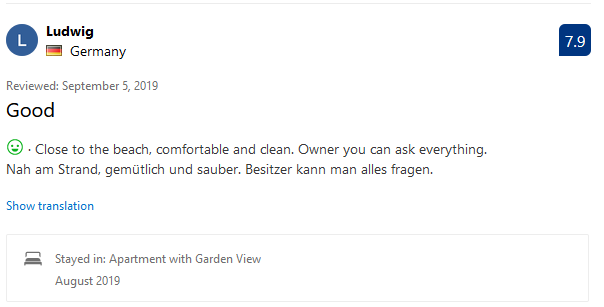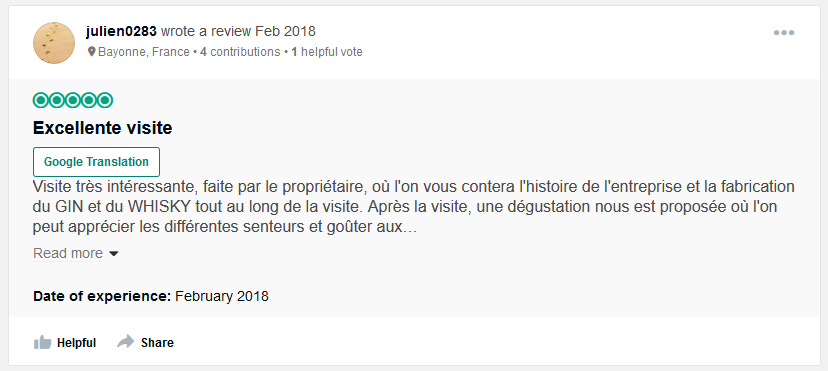Matt Grech
Content Marketing ManagerSmartling
Before I make any online purchase (and I make a lot of them..), I always take the time to read the user reviews. Real stories from real people provide us with direct insight into what kind of experience they had.
Was the sizing accurate? Did the item break within a month? Did the supplier ship out a replacement right away? Did the hotel you were staying at put little chocolates on your pillow?
These personal experiences are critical to buyers making their next purchase. In fact, a study produced by Stackla stated that "90% of consumers say authenticity is important when deciding which brands they like and support."
Translating your user-generated content is one easy way to provide that authentic experience to all consumers, regardless of their native language or location.
What is User-Generated Content?
User-generated content (UGC) is any content that is created and shared by users online through websites and social media.
Chances are, the majority of what we interact with on a daily basis falls under the umbrella of UGC. Social media posts, Reddit posts, YouTube videos, Wikipedia entries, blog posts, user reviews: all examples of User-Generated Content.
The Value of Translating User Generated Content
Online reviews and other UGC have become increasingly important in both B2B and B2C sales. In fact, that same report by Stackla also concluded that "79% of people say UGC highly impacts their purchasing decisions."
User generated content is authentic and real. UGC feels like it is coming from an actual person, not a company trying to sell to you, because it actually is.
When it comes to translating your UGC, brands will want to primarily focus on the content that lives on their website directly: mainly user reviews, but sometimes including blog posts, tutorials, wikis, and even discussion forums.
The Challenge of Translating UGC
There are several major challenges to translating all of the user-generated content on your website, simply due to the inherent nature of such content. But that doesn't mean we can't get a handle on it all with the right strategy.
- Large Volumes of UGC
Probably the most obvious challenge is the sheer amount of user-generated content that needs to be translated. This will resonate strongly with brands that host their own user reviews for multiple products or offerings or enables users to submit their own content to share. - A Continuous Stream of Content
In theory, the stream of UGC should never stop flowing. Your website should always be collecting more reviews, and users engaging with your platform should continue to upload their content. The deluge, in theory, should never end. - Audience Preference
Depending on what region your brand will be targeting, the audience's preference for localization will play a factor here. Nordic countries, for example, don't mind reading English content. France, however, is the opposite. Many prefer a native French experience and would prefer to see all content in French. - Short Life Span
Simply put, users want to read the most up-to-date content. They're curious about reviews from the last month or so, and their newsfeeds will be filled with the most recently uploaded content. - Maintaining Authenticity
The power behind UGC is the authenticity of it. Users are hearing directly from their peers, learning their real world experience. Therefore, it’s imperative to maintain this level of authenticity with all user generated content, especially when translating. - Cost vs Quality
In order to maintain that level of authenticity, the first thought might be to employ professional translators to localize every single piece of UGC; this would most certainly nail the quality aspect. But with such a high volume of content, this will become costly, quickly. Machine Translation, on the other hand, is more cost-effective but might suffer on the quality front. Prioritize your content for translation to save money.
Translating user-generated content poses some unique challenges, and will require a balance between maintaining authenticity, offering a seamless experience, and keeping budget considerations top of mind.
Three Methods of Translating UGC
Depending on the type of UGC you will be translating, there are different strategies and techniques that can be implemented.
For the majority of use cases, Machine Translation is the optimal method for translating the sheer volume of UGC that is uploaded on a continuous basis.
There are three main best practices for translating user generated content:
1. Provide a Native Experience
Brands can offer a native, in-language experience by leveraging machine translation to translate all user generated content.
To maintain that level of authenticity, it’s highly recommended to include a disclaimer that this content has been translated by machine, and even provide users with an option to see the comment in the original language. Booking.com offers a great example of this strategy.

This enables a more frictionless experience, with all content already in the user's language, and offering that level of authenticity by providing the original version.
2. Allow Users to Opt-in to Translation
This approach is a bit opposite for offering a native experience, but leverages the authenticity of UGC.
Instead of showing all content already machine translated, simply provide users with the UGC in its native language, and offer the ability to translate that content on the fly with MT. TripAdvisor offers a great example of this strategy.

This creates an "opt-in" situation where viewers can choose to see the translation if they want, maintaining the authenticity of the original content.
3. Professionally Translate Valuable UGC, MT the Rest
Brands can also implement a hybrid approach of professionally translating high value content, for example the top 10 user reviews, or branding information, while machine translating the rest of the content.
There will be a slightly extra cost with professional translation involved, but an even higher level of authenticity and quality in these translations.
Striking a Balance in Translation
Translating User-Generated Content presents a fairly unique challenge: striking a balance between the cost of translating such a high volume of content and maintaining the authenticity of that content.
In fact, this is where a unified localization strategy works to simplify management across departments and teams.
Whether employing machine translation to provide either a native, in-language experience, or an opt-in localized experience, brands can leverage the value of UGC for any audience around the world.
%20052925%20-%20AI%20Translation%20101%20(1).png)
.jpg)
